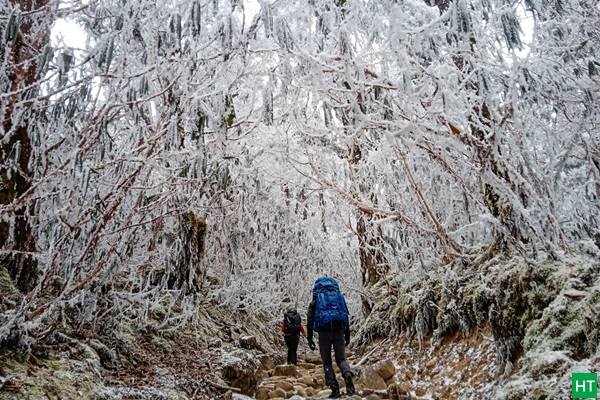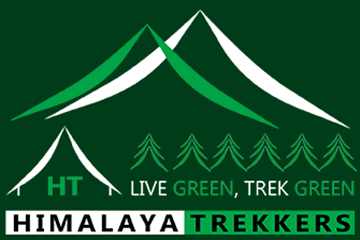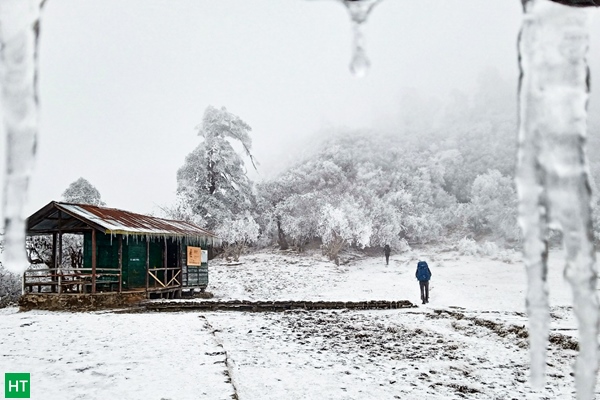Should you plan for the Goechala trek in winter? Typically between December and February? A straightforward answer to this question is a humble no.
“It is most unlikely. But – here comes the big “but” – not impossible.” – Roald Dahl
Let us try to analyse whether it is a feasible idea to plan Goechala in winter or not.
Who may plan Goechala trek in winter?
It is a no-brainer that a winter trekking trail leading to ~ 4600 m/15100 ft and deeply rooted in the high Himalayas will have many challenges to deal with.
First and foremost, I assume that you are not a novice in the mountains. You must be a fairly experienced/seasoned high-altitude trekker who also has a high level of physical fitness.
In an objective way, plan Goechala Trek in winter IF AND ONLY IF you:
- Completed high altitude trails ~ 4500 m /15000 ft or above on a minimum of 3 occasions during your multi-day hikes. You also have the experience of walking on snow (soft, hard, or slushy) and icy or frosty conditions on a hiking trail.
- Fit enough to comfortably carry your fully loaded backpack ~ 15 Kg (these are only your personal items) throughout the trek. At high altitude, this roughly translates to an aerobic fitness level equivalent to running 5 km within 25 minutes.
Quite a lot already? Yes, indeed. This is a really high altitude in winter, and anyone not meeting the above would be potentially at very high risk. Practically you will be in no condition to finish the trek, be it physically or mentally.
What are the risks? And how to overcome:
Now onward I will go through the major challenges or difficulties of Goecha la trek in winter. You and your team (read, trekkers plus support staff) are very likely to face conditions/situations on the trail.
Dealing with the following should give you a fair chance to complete Goechala trek in winter.
Severe Cold Conditions:
By mid November night temperature dips as low as -15°C at ~4000 m/13000 ft or above. Early morning hikes to Dzongri top or Goechala View Point 1 will surely test your endurance against the cold. Even day time temperatures will remain freezing. No matter how you are used to the cold, quality clothing is a must.
Snow and Ice on the trail:
Sikkim and Darjeeling treks receive a low amount of snow when compared to the treks which are in Western Himalayas. It is mainly due to its much southerly latitude compared to Kashmir, Himachal or Uttarakhand. But this doesn’t make things easier.
Be prepared for already deposited snow or fresh precipitation in all possible forms. This includes loose snow, slush, sleet, crossing icy frozen or verglas sections. Use a waterproof high ankle trekking shoe/boot. Keep gaiters and micro spikes/anti slip grip handy.

Avoid the dead of winter:
Even if you have everything in place, you should avoid mid-January and mid-February.
Logistical tweaks:
This is an equally important aspect, if not more. It is common to get steep trail sections often covered with thick vegetation, underlying roots, and logs. Deposited loose snow on these sections can easily be a showstopper for the packed animals (horses or Yak/Dzo). Even a 6 inch to 1 feet snow on trail is very hard to manoeuvre with packed animals.
So I would not recommend horses in particular for winter treks on high altitude. This means more staff/porters/manpower from the logistics part and thus costly. At the same it is a safer logistical choice to attempt Goechala in winter. There are Govt basic Trekkers Hut/Shelters in limited locations but without our own setup/logistics it is a high risk to move in winters. Thankfully we have experienced local staff members and guides who can handle some snow.
With all these in place Goechala trek is “feasible to plan” with a bit of luck from weather.




Comments